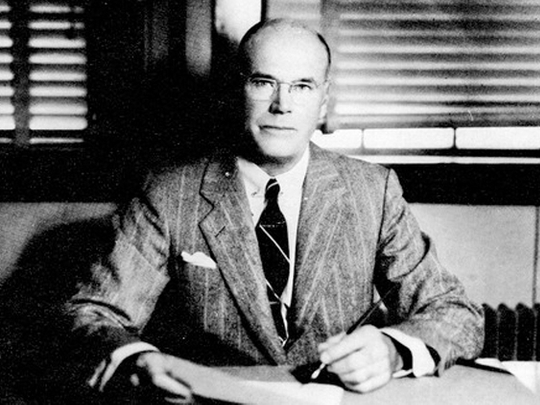
Had it not been for a certain chap named Francis W Davis, those of us who drive might have had arms as large as the Hulk’s by now. That we don’t is thanks to the American mechanical engineer who invented power steering all those years ago. Cars had been steadily getting bigger and heavier and turning the wheel required a considerable amount of effort. Enter Davis and his hydraulically powered unit, developed almost a century ago.
Back then, cars were difficult to drive and Davis was aware of the problems drivers faced. Weight was a key factor especially as there was a trend towards larger automobiles equipped with an increasing number of accessories. To make matters worse, the pneumatic tyre was introduced and this increased steering resistance. Something had to be done.
Many leading engineers of the time thought reducing the friction in the steering mechanisms would solve the problem. Though this helped, Davis noted it caused another problem — vibration in the steering wheel itself. Vacuum, mechanical and electrical power-steering systems were tried and tested but the only way forward, according to Davis, a Harvard University graduate in 1906, was to create a hydraulic system.
He worked for American automobile manufacturer, Pierce-Arrow, and this allowed him invaluable insights into how the technology actually worked. The OEM’s tools were all hydraulically operated and so, he began researching the technology with a keen interest after leaving the company in 1922. The biggest challenge he faced was to make the technology small enough to be able to fit under car bonnets as hydraulic systems used in industrial presses required massive storage tanks containing pressurised oil, pumps, valves and hose lines.
Pressure losses and leaks to many of his early inventions almost caused him to throw in the towel. But some out-of-the-box thinking helped him to develop an open-valve system that allowed oil to flow continuously, but when power-steering assistance was needed, it closed and let pressure build up. He put the system to the test by installing it to his 1925 Pierce-Arrow Roadster and it worked a treat. He proved that a hydraulic power steering not only made it easier to steer a car, but it also removed all the vibrations coming through to the wheel via the various linkages.
His design was a hit, but the timing of it couldn’t have been worse as the Great Depression of the Thirties meant few carmakers wanted to splash the cash at the new technology. However, the US military was interested, and so Davis was able to develop the system on many other applications. With the Second World War over and the US economy showing signs of picking up, it was Chrysler that took the brave step of introducing the hydraulic power steering on its Imperial saloon in 1951.
That it never looked back proved what a success it was and five years later, over two million cars had been sold with power steering in the US. These days, it’s almost impossible to come across a car without one. You can thank Davis and his persistence for perfecting the technology the next time you slip your SUV into a really tight spot at the mall without breaking a sweat...











